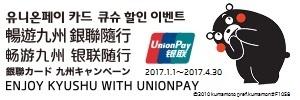ARTICLE
A Meeting of Minds: How East and West Met in Kyushu
21/12/2016
- Author : Dave
- Country of Origin : United Kingdom
- Age : 30's
- Gender :male
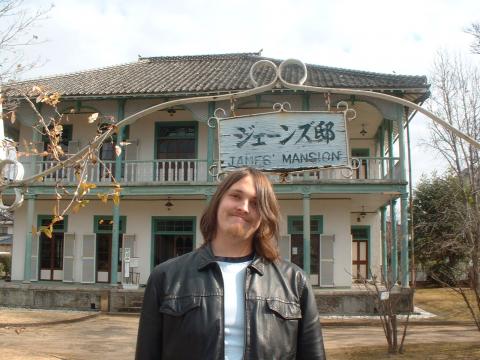
When I heard the news that Kumamoto Prefecture had been hit with a massive earthquake I got really worried. I was worried for the friends I had made there during my time as an exchange student in 2008, worried for their families, and worried about what happened to the city of Kumamoto and the surrounding villages. Fortunately my friends and their families were safe, but the damage to the city was another story. Buildings had giant cracks in them, the keep of Kumamoto Castle was wrecked, and this building was completely flattened.
This was the Janes' Residence- a house dating back to 1971 to house L.L Janes and his family, an American who had been hired by the School of Western Learning to teach English in the city. It was originally situated closer to the castle, but was moved about a few times before finding its spot in Suizenji Garden. I went there as part of a little school trip with fellow students- international and local- through Suizenji Park. By this point I had been in Kumamoto for about 3-4 months and had settled quite well into Japan, but seeing the odd Western-style building amongst the more modern Japanese-style constructs always piqued my interest- particularly older ones like the Janes' Residence.
The interior was just as unique- as if time had stopped for the place the moment the Janes' family returned to America and left the building, save for the bollards with the velvet ropes set around certain sections. But my most striking memory of the Janes' Residence was coming across a display case containing a series of books Mr Janes had written in at the time. Log books, entry books, notes- all laid open to bare in the cases. I thought I'd try looking through one when one of my Japanese friends noticed me and, with a smile, asked 'Can you read that?'. I found it kind of funny at the time as, if it were the other way around- us taking a tour of the UK- it's likely she'd be asked the same question whenever something with a kanji character cropped up, whether it was Japanese, Chinese or otherwise (as sad as that may be to admit). Unfortunately for her I couldn't quite make it out as the cursive joined-up handwriting had become a little too faded for me to make out.
But that funny memory, and this photo of me standing outside the Residence, has stood out to me for all these years. It's one I often think back on when I think of my time in Japan, and why I felt particularly heartbroken when I found out the building had been completely flattened during the earthquake. I'm hoping it could be rebuilt with whatever could be salvaged, but even if it can't then at least I have my photos and my memories.
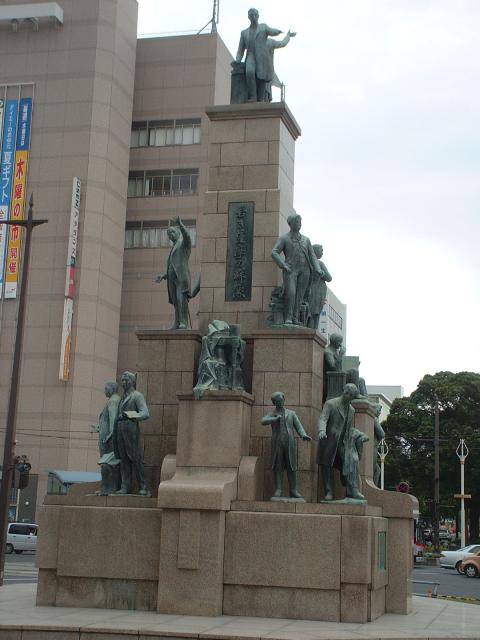
During the latter part of my time in Japan I managed to take a day trip by myself to Kagoshima on the south end of Kyushu. By this point I had visited other cities and towns such as Fukuoka and Tokyo, and wasn't sure just how different the city might be by comparison. I had heard of some of its history and famous sights- notably as the birthplace of Saigo Takamori, as well as the site of his last stand. But the city ended up being a learning experience in more ways than one.
From just a day's exploring I discovered many interesting facts about this city. I learnt that it was twinned with both Miami, Florida and Naples, Italy- the latter particularly poignant as, like Naples, Kagoshima also has a volcano just a few miles offshore. I learnt St Francis Xavier, co-founder of the Jesuit movement and patron saint of Asia had founded a mission in the city in 1549 where a cathedral dedicated to him now stood. I also learnt that the people in Kagoshima are quite friendly to foreigners like myself. Not that the people in Kumamoto, Tokyo, Fukuoka and elsewhere in Japan were rude as they were perfectly polite and charming too. But the people of Kagoshima took it to another level as 4 locals spoke to me at length, whether it was telling me where certain sights were or just asking how I was doing and where I was from. A mother and her baby even waved to me from a bakery as I was passing by.
Maybe they were just willing to help out a tourist, or they were just curious about me taking a wander through their city. Either way I was grateful as I explored the rather ornate city. I noticed there were a lot of statues, like the ones of Saigo Takamori and St Francis Xavier, but the one that stood out to me the most was the one pictured above; The Spirit of Satsuma, multiple figures in a variety of poses situated on a large plinth close to the railway station. Being a former art student it quite impressed me at the time, and still does today. Though the story behind the statues is perhaps more impressive- how 19 students, the majority being from Kagoshima's home province of Satsuma, managed to leave Japan in 1865 by a series of boats to study at University College, London.
This was a few years before the Meiji Restoration, when it was still illegal for Japanese to leave the nation despite pressure to trade and work with the Western world, so these 19 students took a large gamble and a long 2 month journey by boat to do in Britain what took me a visa and a day's worth of flying to achieve almost a century and a half later in Japan. They were pioneers in their way, one of the early cracks in the old order before the Meiji Restoration, and perhaps one of the factors why modern Kagoshima residents were so friendly to a Westerner like me walking about.
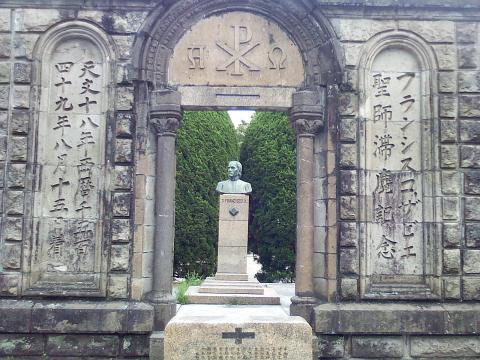
As with the Janes' residence, Western-style items in Japan always seemed to stick out that bit more for me. Maybe it was homesickness, or maybe its style just stood out so much from the others like a lime in a basket of satsumas. Kagoshima had already shown me how friendly the residents could be to foreigners, and how some of their history was tied to an interest in learning from the West. But when I went by the St Francis Xavier Park, I learnt it went further back than the mid-1860's.
I've never been a particularly religious person- quite the opposite usually. But I've always been keen on history, and Japanese history felt like quite an enigma to me. I had learnt a little in university on a course subject entitled 'From Meiji to the Microchip', where the modern history of Japan was taught. But it seemed like there were few resources on Japanese history prior to that. I had a vague awareness of the likes of Nobunaga, Hideyoshi and the Tokugawa Shogunate, but nothing concrete. A Japanese friend said learning modern history was probably for the best as the older history was mixed in folklore. Toyotomi Hideyoshi was a real person, but whether Oda Nobunaga called him 'Monkey' and whether he had his ambitions frustrated by Goemon Ishikawa was a whole other matter entirely.
So seeing a park, as well as a church and cathedral, dedicated to a Western saint in Japan was a little curious. It could've been a modern dedication to a figure who had never heard of Japan let alone visited it, but that wasn't the case. The figure depicted here is St Francis Xavier, a Spanish Catholic missionary and co-founder of the Jesuit movement, who toured throughout Asia to spread the Christian message. He reached Japan in 1549, landing in Kagoshima, and became the first man to introduce Christianity to the nation by establishing a mission in the city, which lasted about a year until the religion was outlawed.
He didn't do this alone though. It wasn't until he met a Satsuma native called Anjiro in 1547 in Malacca that he heard about Japan and its customs, and it was Anjiro that led the way and helped mediate for him once he arrived in Japan. He's gone down in history as perhaps Japan's first Christian, though perhaps it's that enterprising spirit- the one willing to travel and learn new ideas and adapt them for life at home- that's one of his more impressive aspects, one succeeded by the likes of the Satsuma students and the Meiji Restoration.
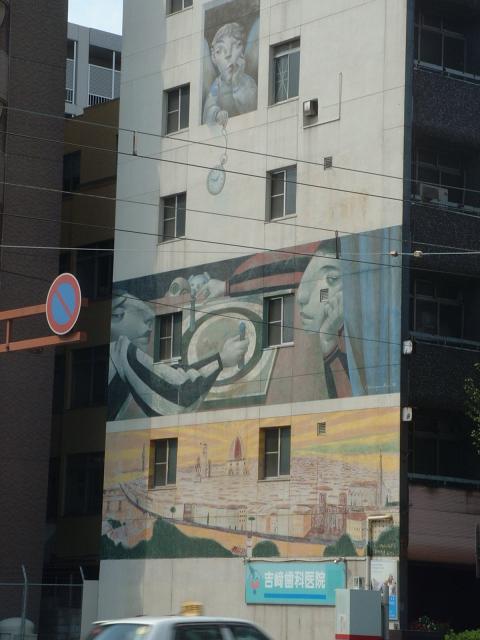
While walking to Downtown Kumamoto from the Shin-Oe district, I noticed this mural on a building just before the bridge leading to the city centre. I never learnt who painted it nor why- not even Google could help me- but they seemed to be going for a more Western style than the Japanese style I had seen in the ornate pictures in Kumamoto Castle. It resembled some early 20thC Surrealist paintings I had seen where, though it seems innocuous at first, kind of put me ill at ease, like a piece by Paula Rego. The city at the bottom also got me curious and I had asked some friends about it. They weren't sure who did the piece either, but one of them said the city was Florence in Italy, famous for housing artworks from a veritable Who's Who of Italian Renaissance artists from Da Vinci to Michelangelo.
Kumamoto has quite a love for art, taking pride in their Contemporary Art Museum- the first of its kind in all of Kyushu according to their tourism website- and producing the Kumamoto Artpolis for its unique approach towards architecture. But as quirky as Tamana Observatory is, or how classical and beautiful the pieces within the castle keep are, it was this one surreal mural on the way downtown that always caught my eye and made me think each time I saw it.
If you would like to edit your article after submission, please click the "EDIT" button.





![Kyushu Tourism Information [ Japan ]](/blogcontest/img/common/bnr_onsen_island.png)

